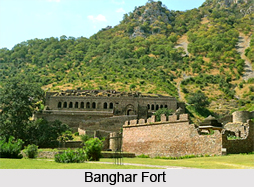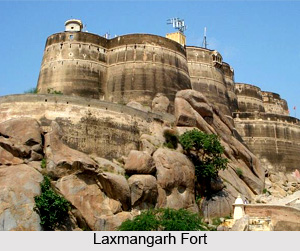 Archaeological sites in Rajasthan illuminate numerous facts and events of ancient past and help to trace the developmental course of Indian history. The sites have furnished various artefacts belonging to different civilizations that were once the inhabitants of this region. The social structure of the remote past has also been deciphered through various evidences which also proved the fact that the region was occupied since pre historic times. Architectural remains found are exemplary of the artistic dexterity existent during the bygone era. Apart from helping to discover the historical facts these places also serve as significant tourist destination.
Archaeological sites in Rajasthan illuminate numerous facts and events of ancient past and help to trace the developmental course of Indian history. The sites have furnished various artefacts belonging to different civilizations that were once the inhabitants of this region. The social structure of the remote past has also been deciphered through various evidences which also proved the fact that the region was occupied since pre historic times. Architectural remains found are exemplary of the artistic dexterity existent during the bygone era. Apart from helping to discover the historical facts these places also serve as significant tourist destination.
Balathal
Balathal, situated in Udaipur district of Rajasthan, is an important archaeological site which has revealed relics of two ancient cultural periods namely Chalcolithic and the early historic. Kataranadi River flows close to this site and archaeological evidences have suggested that another water body had existed nearby which had dried up in due course of time. After the period of its occupation, the place was abandoned for a long time. Agro-Pastoralism, a combination of farming and herding animals, was widely practiced here. Remains of pottery found in this region also signify the lifestyle of ancient civilizations in this region.
Banghar Fort
Banghar fort, located in Alwar district, is an old fort enclosing an abandoned city which was established by King Madho Singh in 17th century. Inside the fort premises, ancient temples and palaces stand. Archaeological Survey of India prohibits the stay of any person at the fort campus after sunset and before sunrise as the place is believed to be haunted. There are two famous legends associated with this belief.
Baror
Baror is another archaeological site located in Sri Ganganagar district. The site is associated with Indus Valley Civilization. Remains of pottery found here belong to Pre Harappan and Harappan period. Other artefacts found at this place include shell bangles, terracotta, circular beads and many others.
 Dhosi Hill
Dhosi Hill
Dhosi hill, situated at the border of two Indian states Rajasthan and Haryana, is an extinct volcano. It forms an important place where evidences related to the settlements of Vedic period have been found. It was also a centre of Ayurveda during this period. The place also houses the remnants of an old fort built by Samrat Hem Chandra Vikramaditya, about 500 years ago. It was mainly built to protect the Ashrams and Heritages on the hills from Muslim invasion during medieval era.
Ganeshwar
Ganeshwar is a village located in Sikar district and serves as a significant archaeological site. Excavations at this site have furnished artefacts belonging to a 4,000 year old civilization. Stone tools and microliths found have been ascribed to pre-Harappan period. Several copper articles such as chisels, bangles, fish hooks, spearhead and arrowheads have been excavated here.
Gilund
Gilund, in Rajsamand district, is enlisted amongst the five ancient sites excavated in the Ahar-Banas Complex which is the Chalcolithic archaeological culture of south eastern Rajasthan. The place was inhabited during 3000-1700 BCE and the ancient settlements have been divided into three cultural phases. Several housing structures have been unearthed in Gilund and the people were mainly agro-pastoralists.
Kalibangan
Hanumangarh district of the state houses the town of Kalibangan which was the site of prehistoric and pre-Mauryan civilizations. According to Archaeological Survey of India the town was a major provincial capital of the Indus Valley Civilization. Kalibangan has also been identified as the world`s earliest attested ploughed field.
Laxmangarh Fort
Laxmangarh fort is an ancient fort standing in Sikar district and is presently in ruins. It was constructed by Rao Raja of Sikar, Laxman Singh in the year 1862. The uniqueness of the fort architecture is famed all over the world as the fort stands over scattered pieces of huge rocks.



















